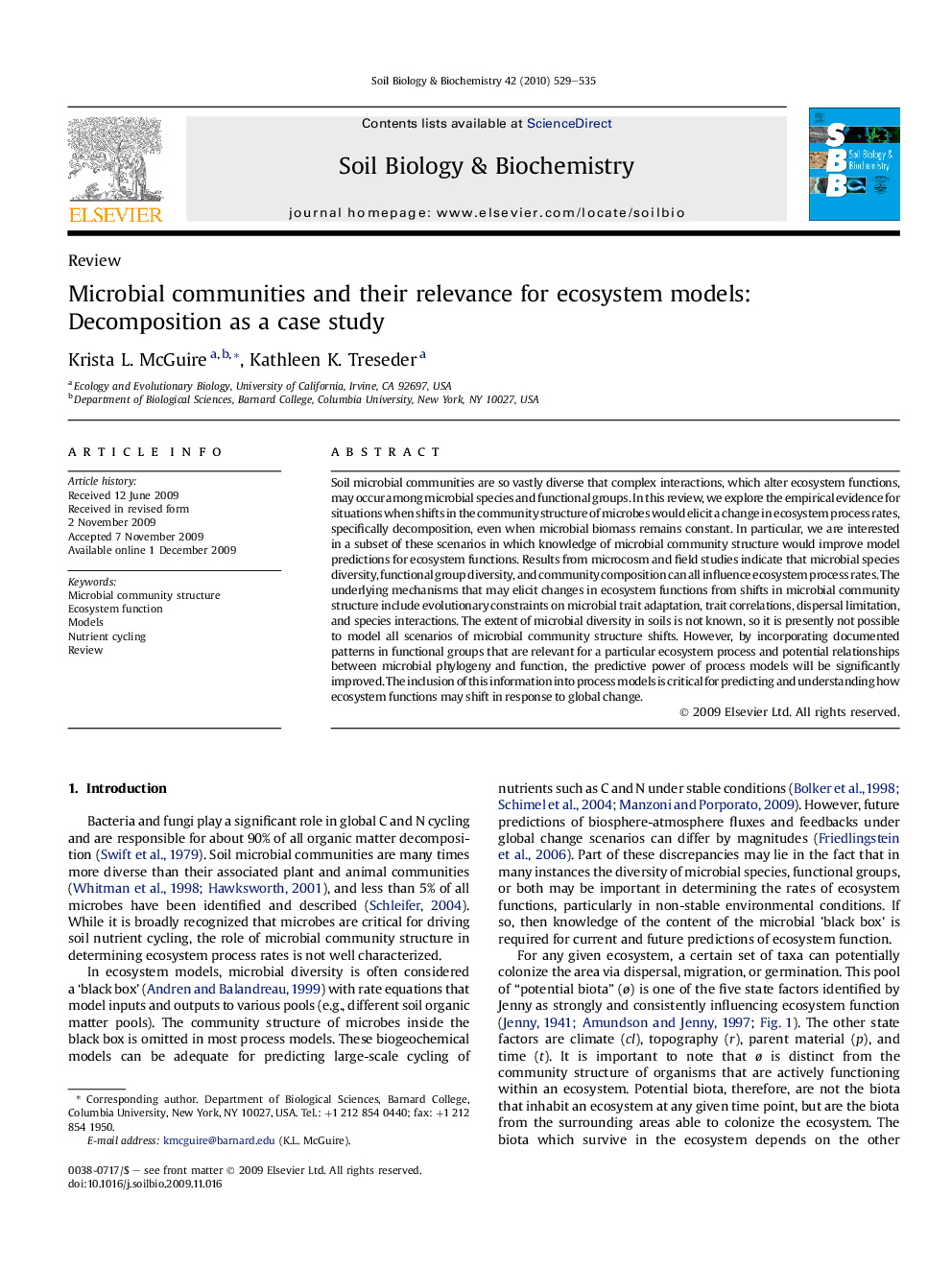| Article ID | Journal | Published Year | Pages | File Type |
|---|---|---|---|---|
| 2025049 | Soil Biology and Biochemistry | 2010 | 7 Pages |
Soil microbial communities are so vastly diverse that complex interactions, which alter ecosystem functions, may occur among microbial species and functional groups. In this review, we explore the empirical evidence for situations when shifts in the community structure of microbes would elicit a change in ecosystem process rates, specifically decomposition, even when microbial biomass remains constant. In particular, we are interested in a subset of these scenarios in which knowledge of microbial community structure would improve model predictions for ecosystem functions. Results from microcosm and field studies indicate that microbial species diversity, functional group diversity, and community composition can all influence ecosystem process rates. The underlying mechanisms that may elicit changes in ecosystem functions from shifts in microbial community structure include evolutionary constraints on microbial trait adaptation, trait correlations, dispersal limitation, and species interactions. The extent of microbial diversity in soils is not known, so it is presently not possible to model all scenarios of microbial community structure shifts. However, by incorporating documented patterns in functional groups that are relevant for a particular ecosystem process and potential relationships between microbial phylogeny and function, the predictive power of process models will be significantly improved. The inclusion of this information into process models is critical for predicting and understanding how ecosystem functions may shift in response to global change.
